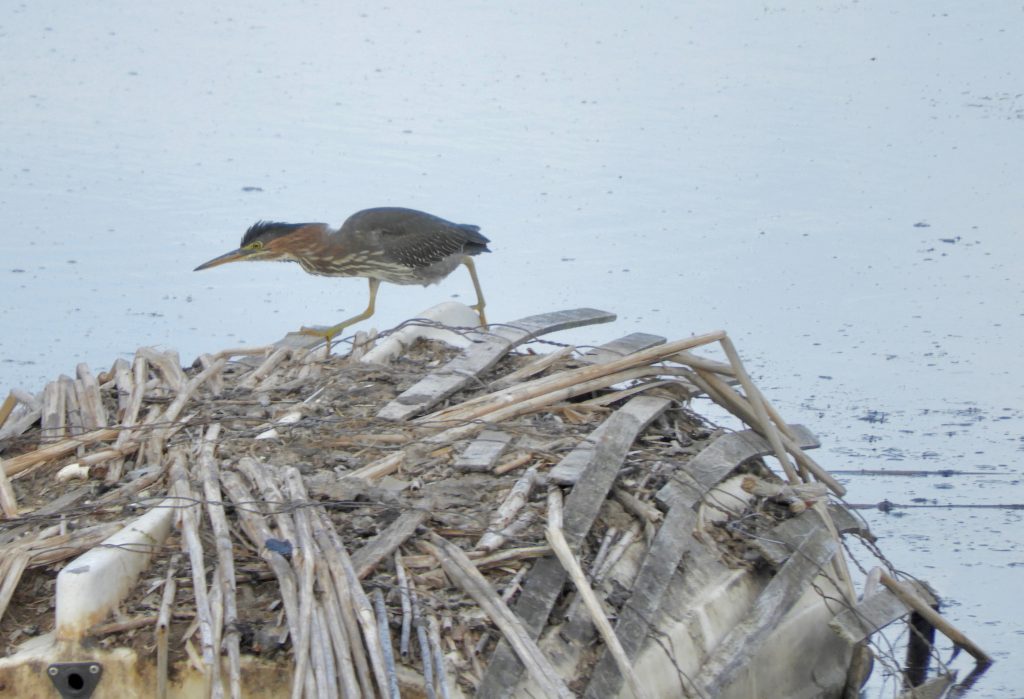
Grimsby Wetlands, Grimsby, ON , August 16, 2020. I saw a Buff-breasted Sandpiper this morning – through my telescope, some 350 metres distant (according to Google Maps), and hard to make out against the background clutter. Well, but I saw it and it is a helpful and unexpected addition to my 5-mile-radius bird list. But I can’t say it was a particularly memorable birding moment, unlike my last Buff-breasted Sandpipers. That was May 2013 in Suchitoto, El Salvador. There, I saw a field of them, still a long way off but rather charming as they sought food among longish grass, their heads popped up in turns to check for trouble. It is a vivid memory for the setting as much as for the bird. I mean, why would anybody be birding in distinctly unsafe El Salvador of all places? Well, you can find out more by following this link.
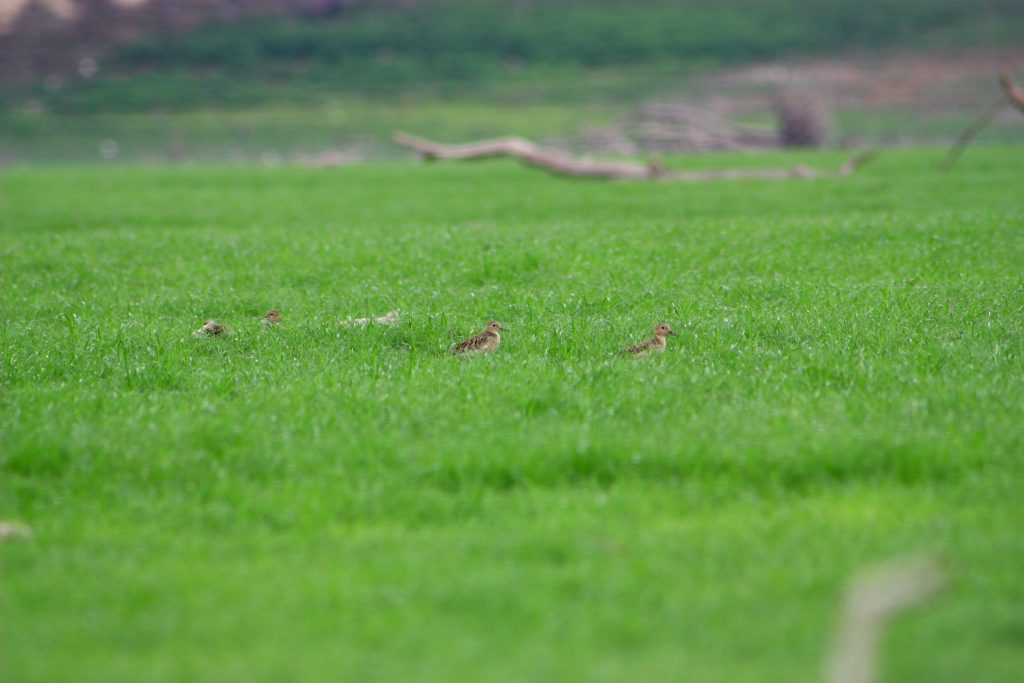
But before the Buff-breasted Sandpiper stop, I revisited the wetland that has been so productive of shorebirds in the past couple of weeks. The soggy mudflats had largely dried up and where some water remained, I found four Pectoral Sandpipers picking for food. They provoked another vivid memory, this time of Pectoral Sandpipers in late July nine years ago when I watched several at quite close quarters and witnessed a lengthy posturing squabble between two of them. What purpose the elaborate aggression served I can only guess at, perhaps a lingering testosterone-driven bit of oneupmanship. Here’s a photo of those two combatants.
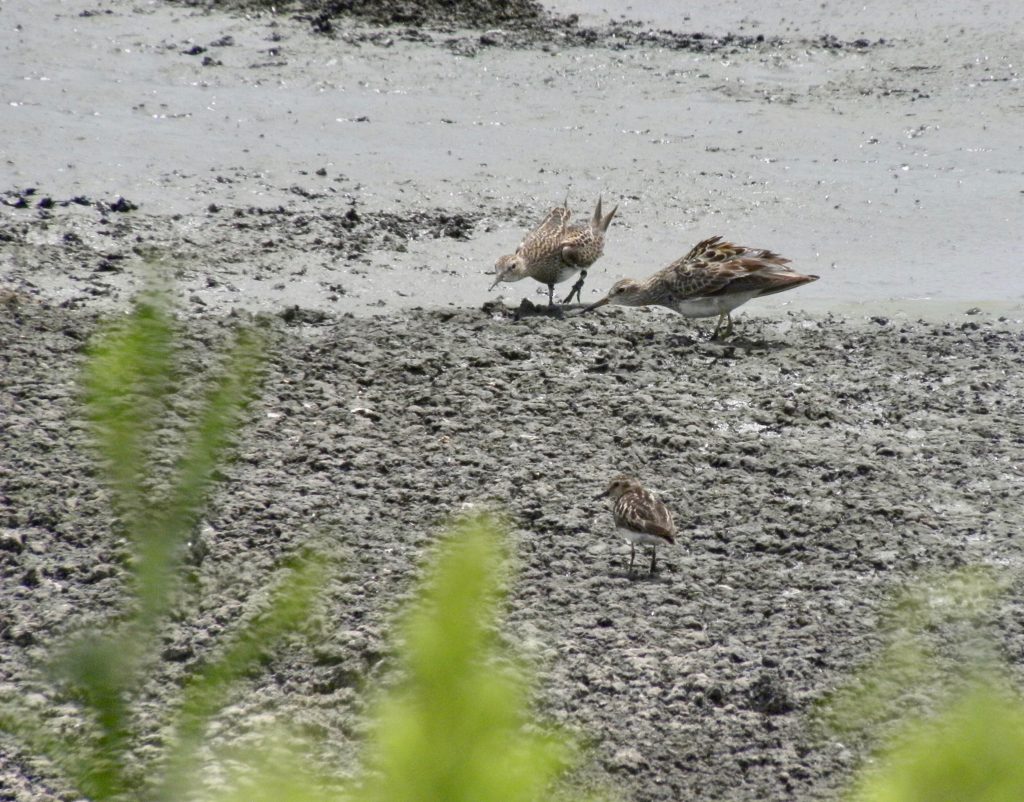
Found on a raft of old weeds in a nearby pond, my Bird of the Day this morning was a streaked-necked, and therefore young, Green Heron prowling the water’s edge for a meal. It reminded me (another flashback) of a Striated Heron seen and photographed in Oman earlier this year. It had really baffled me because it is a melanistic Striated Heron, a colour aberration not illustrated in my field guide. The Striated Heron and the Green Heron are very closely related, in fact a debate rages as to whether they are both sub-species of a superspecies. I’ll leave that with the hairsplitters.
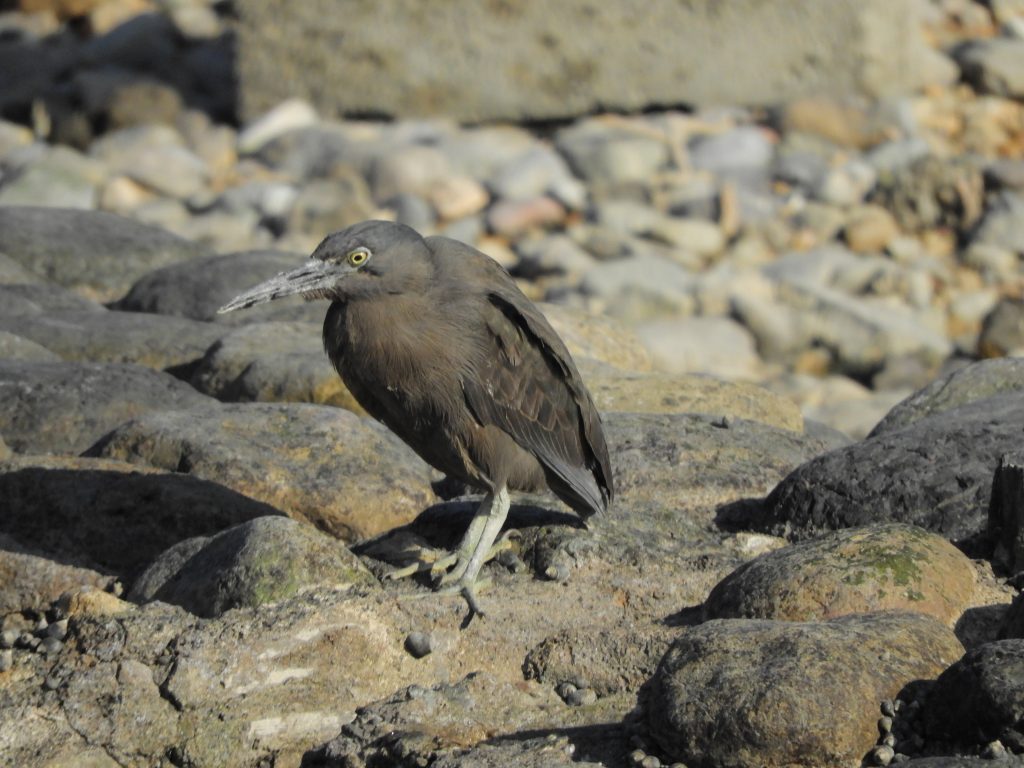
Striated Heron (melanistic form) 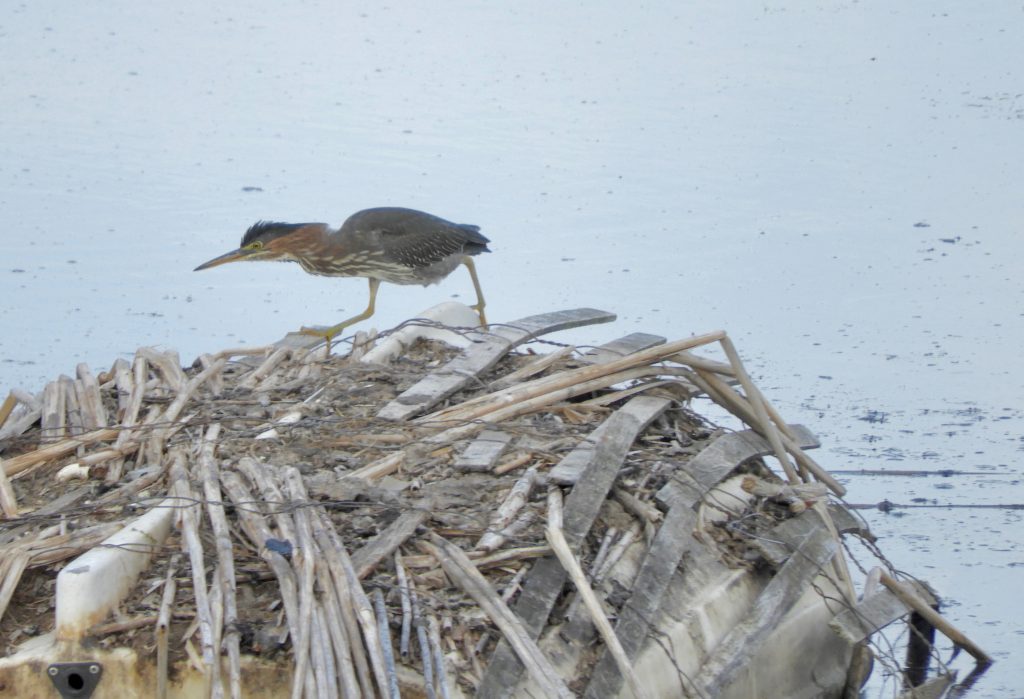
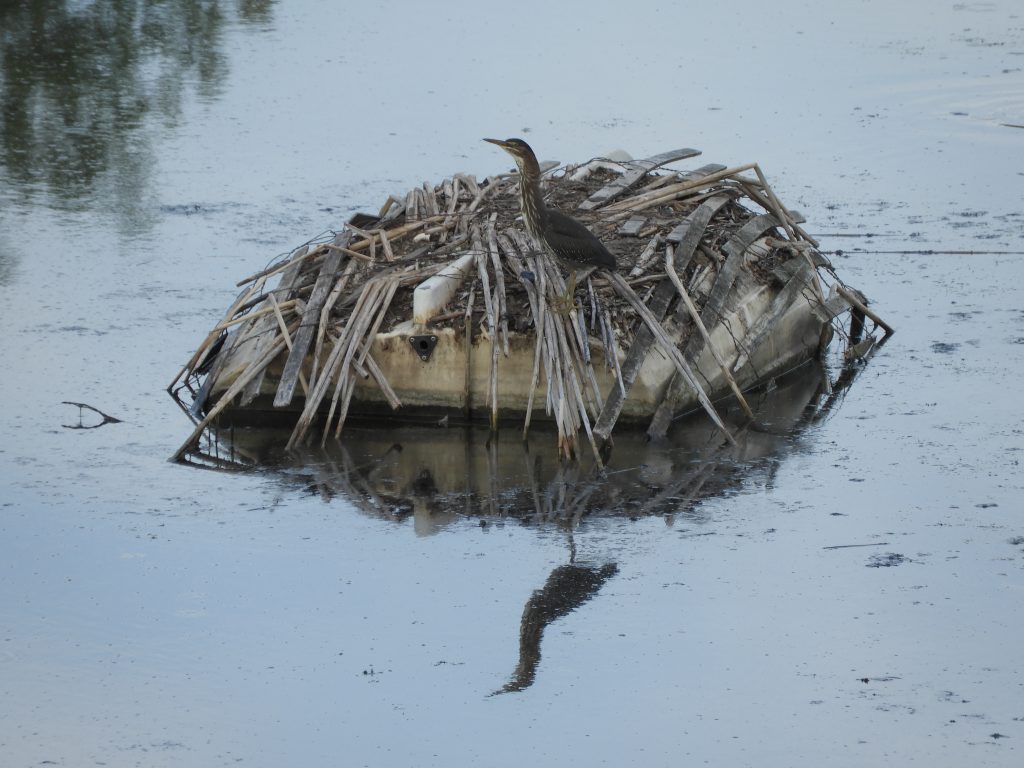
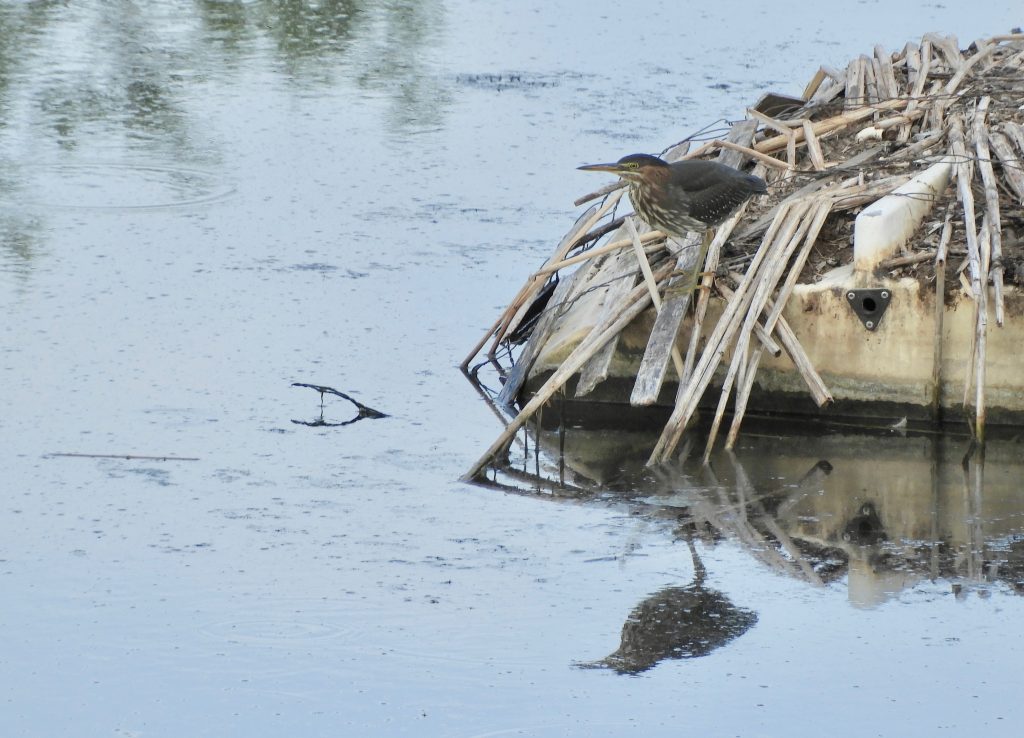
Today’s Green Heron